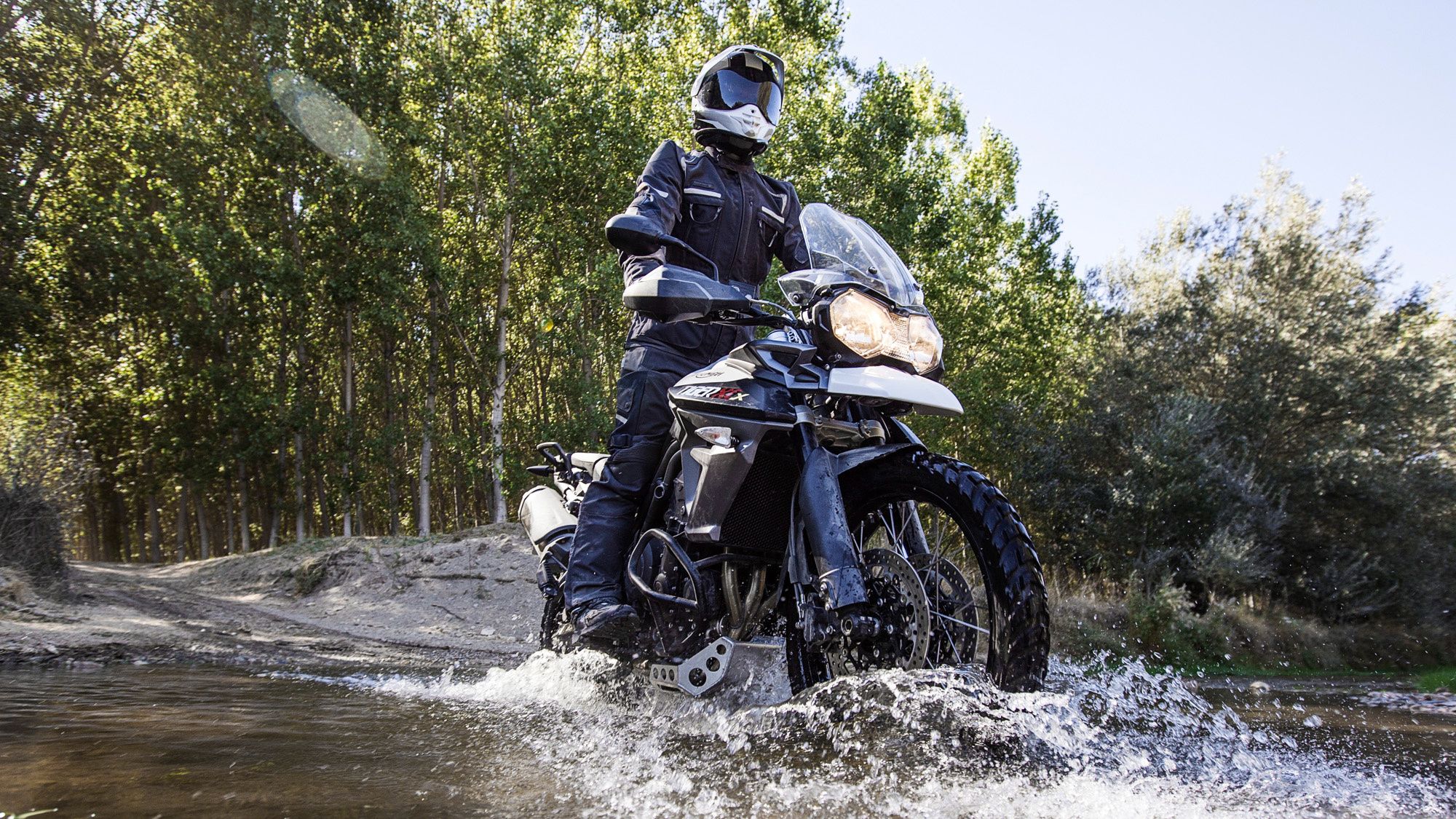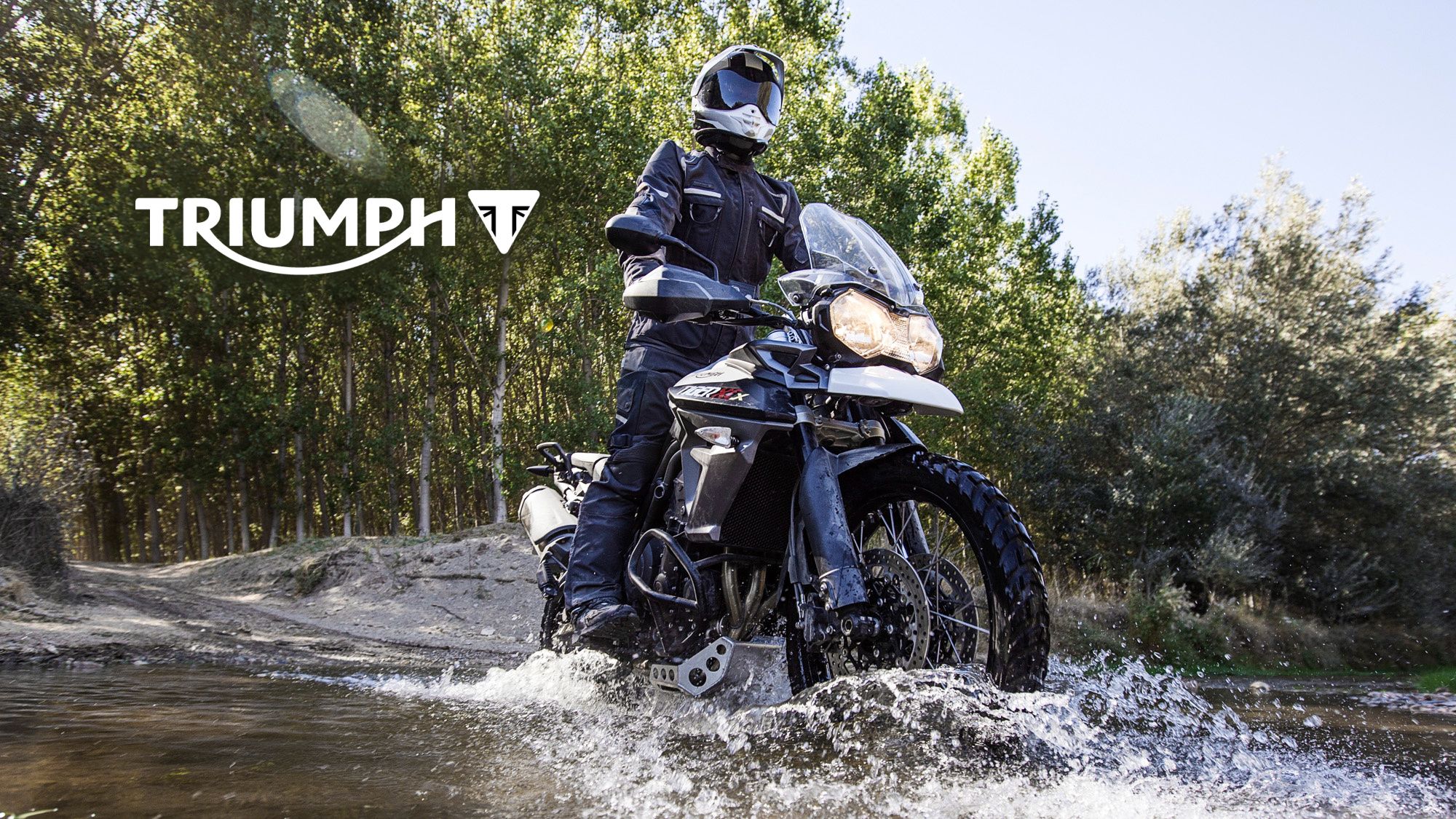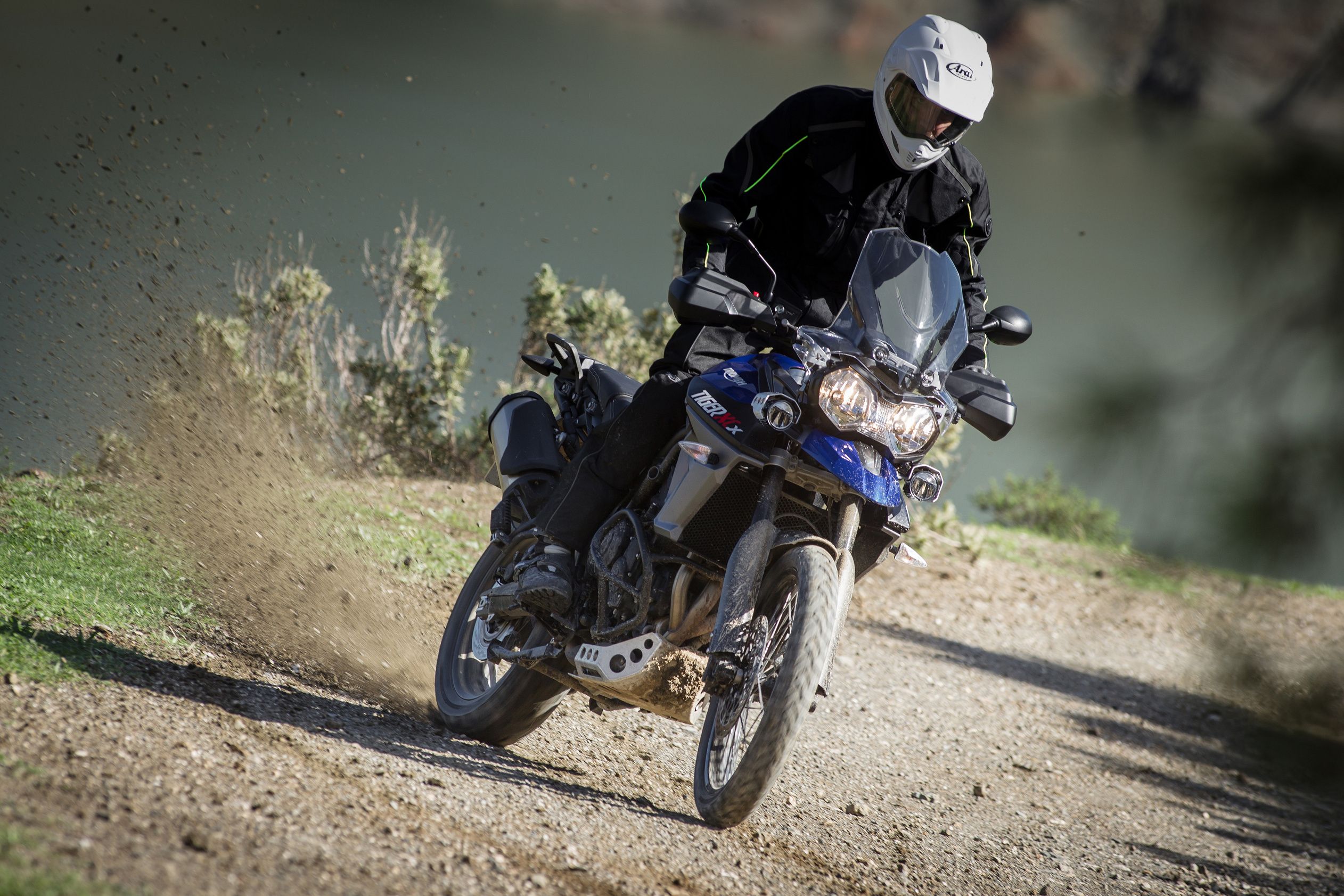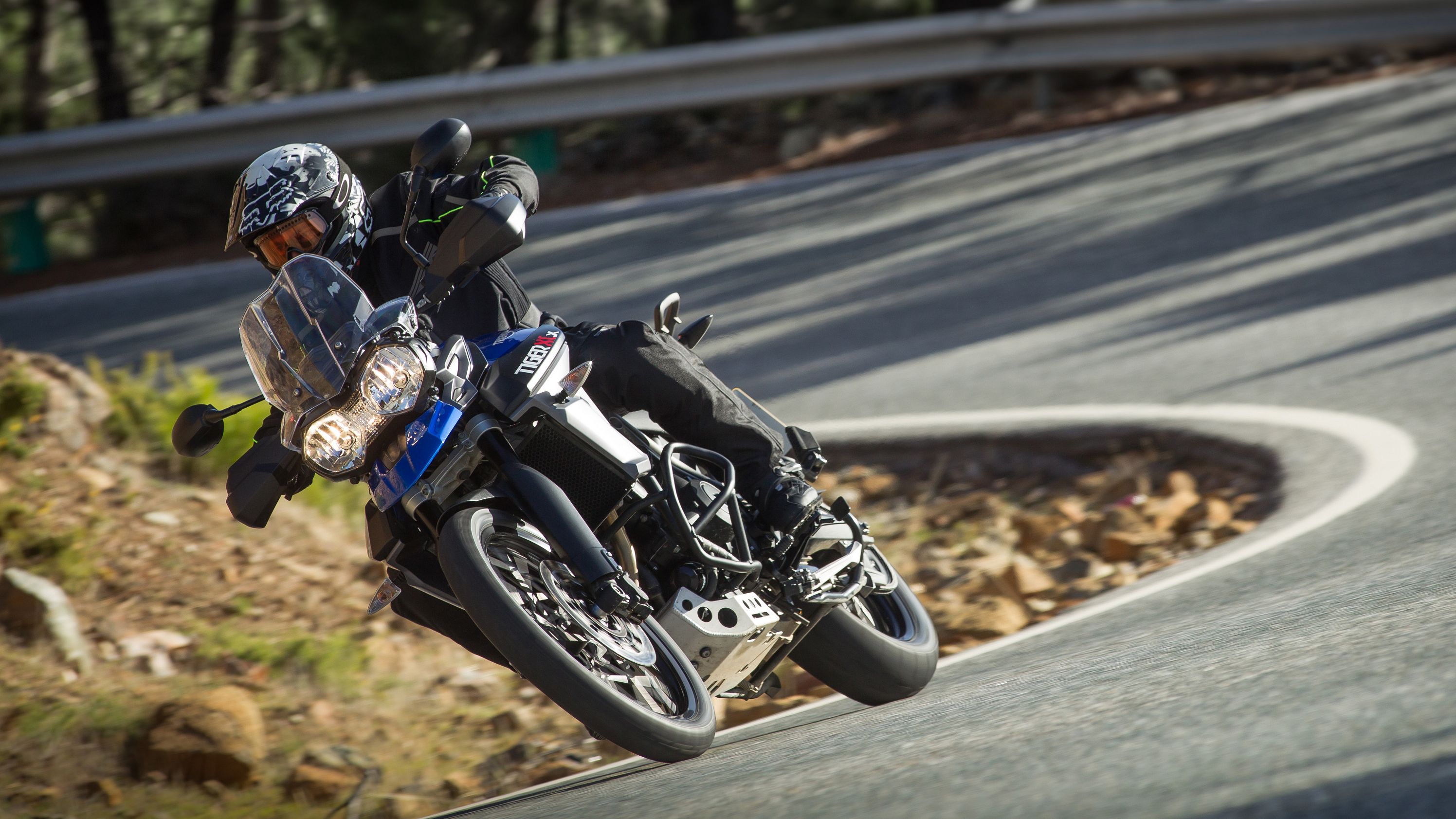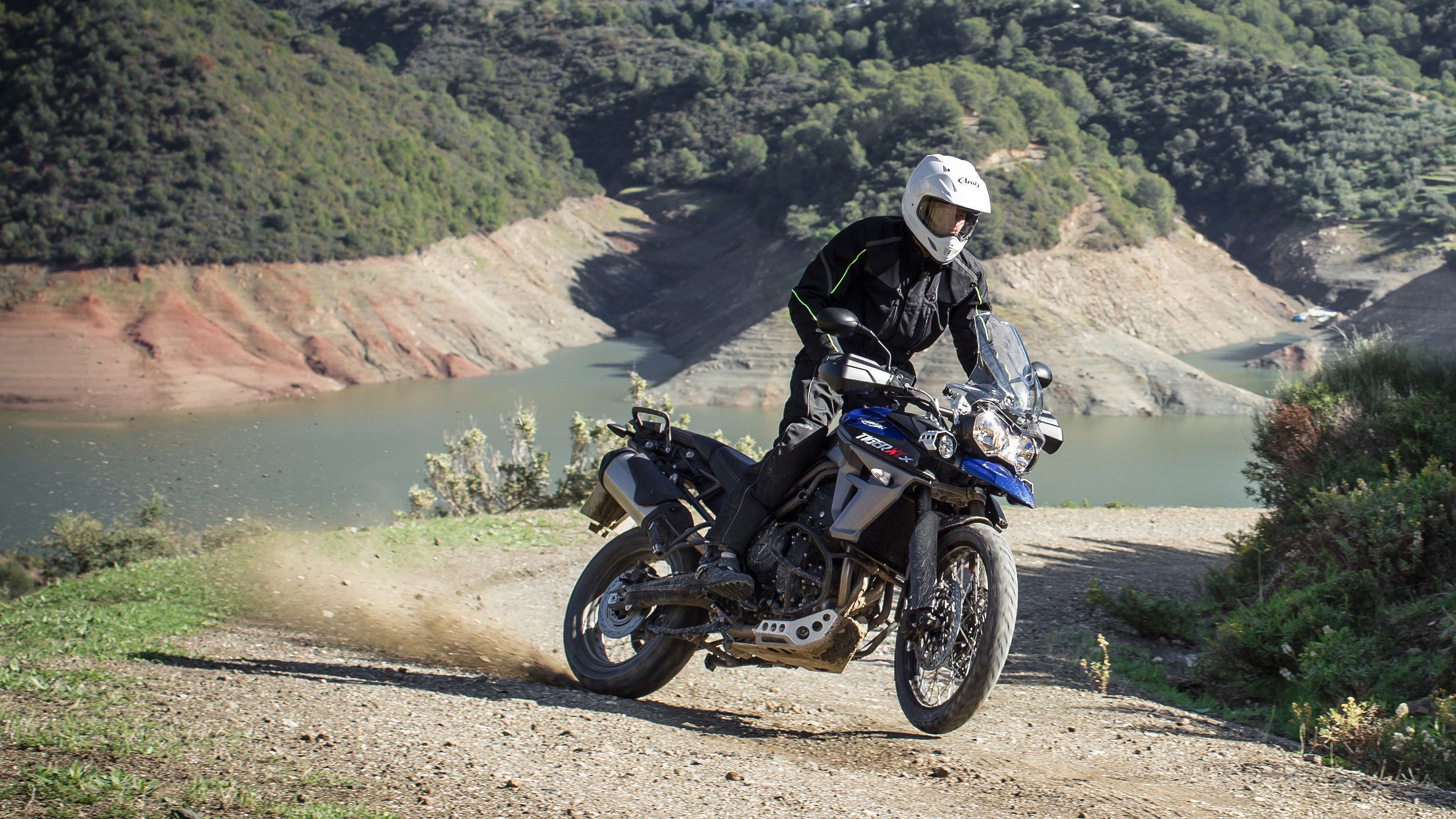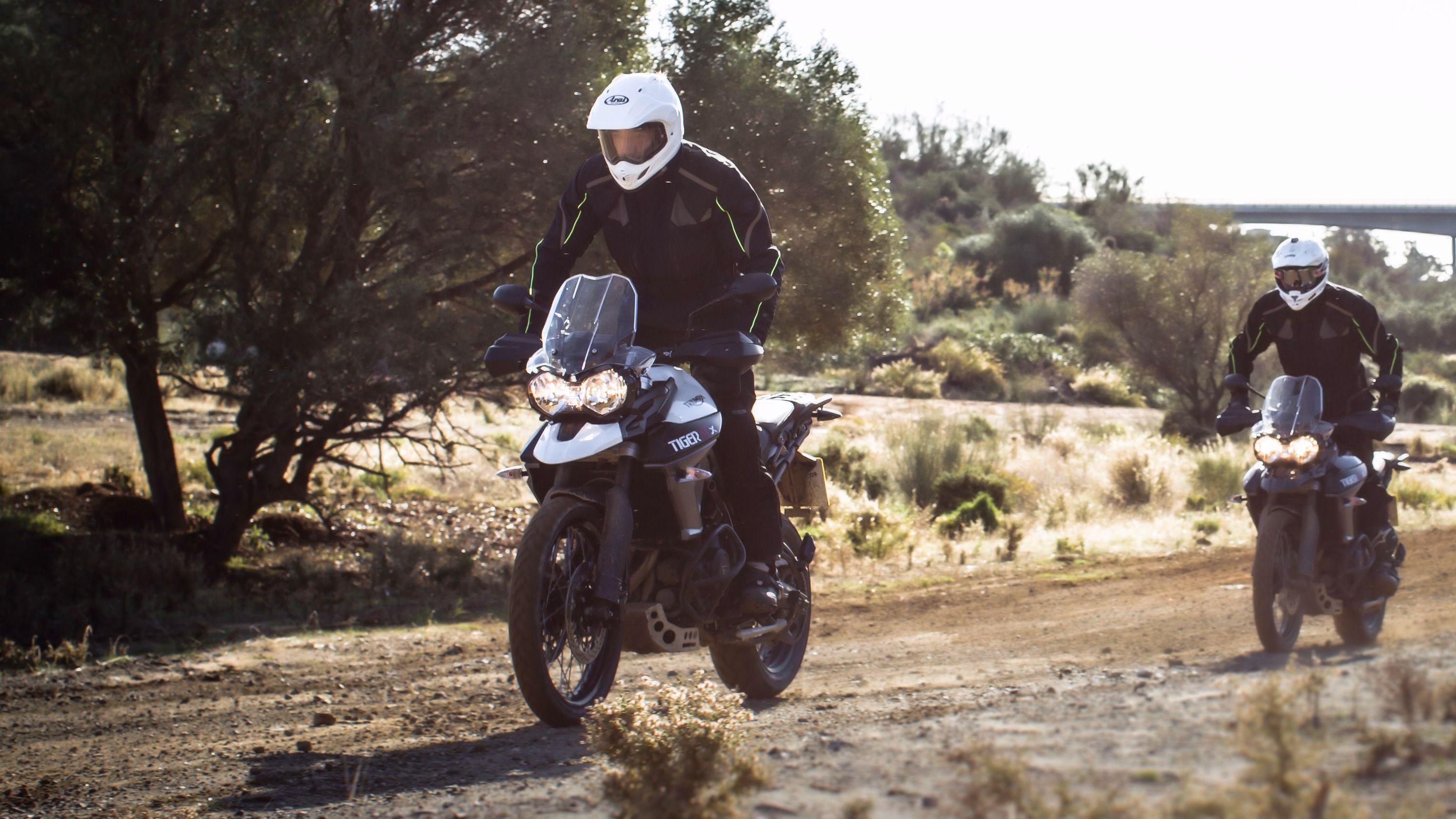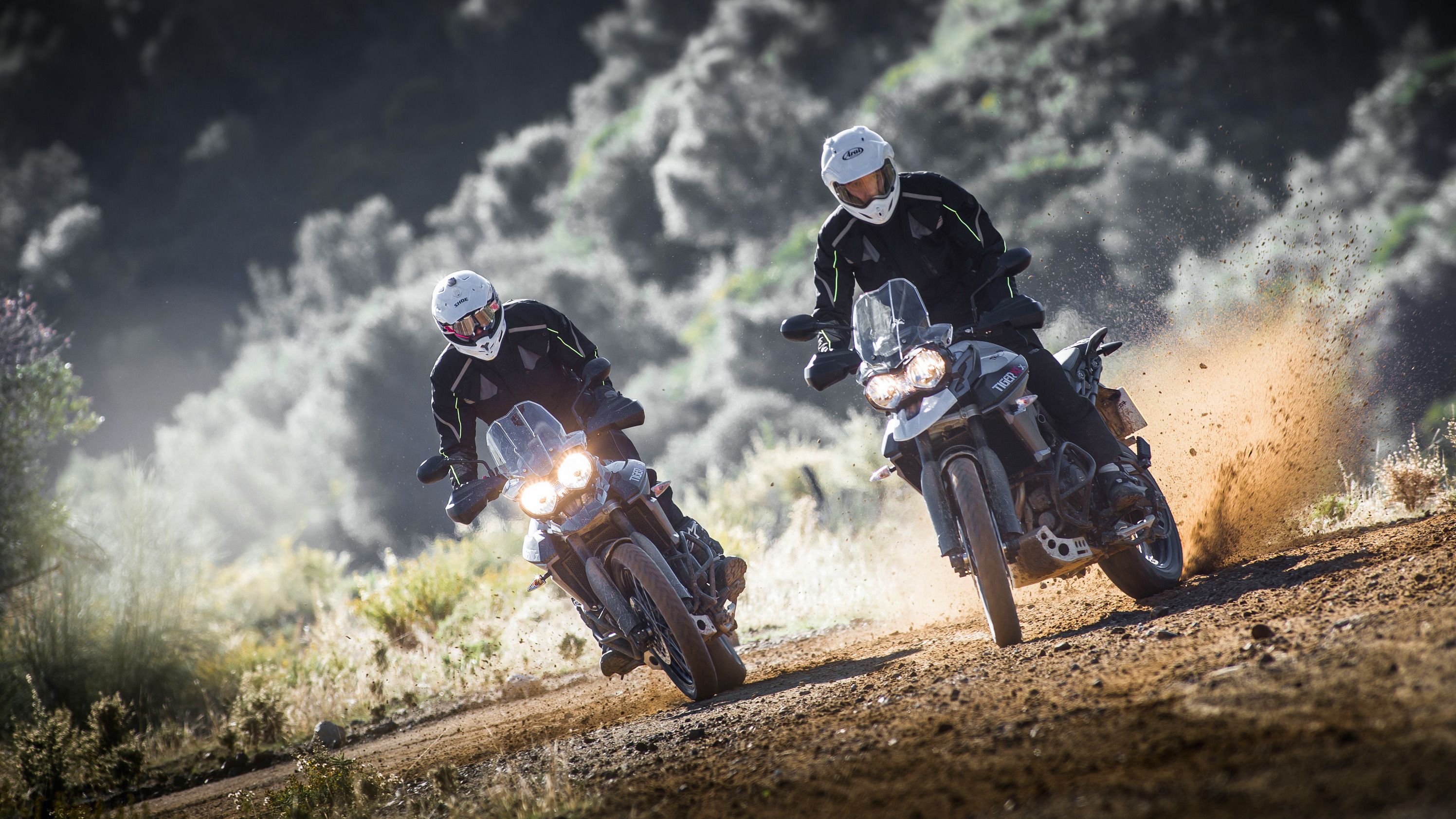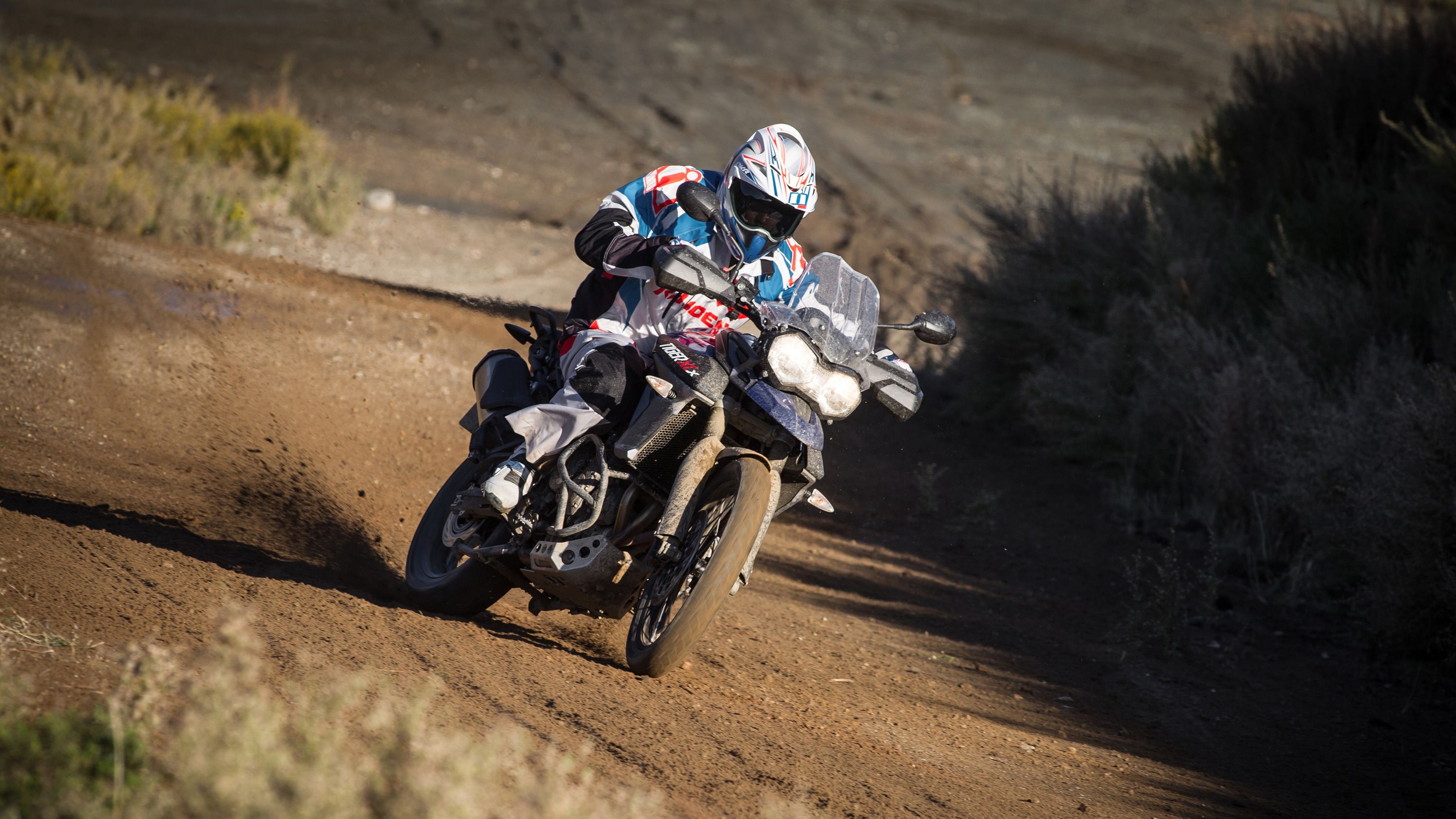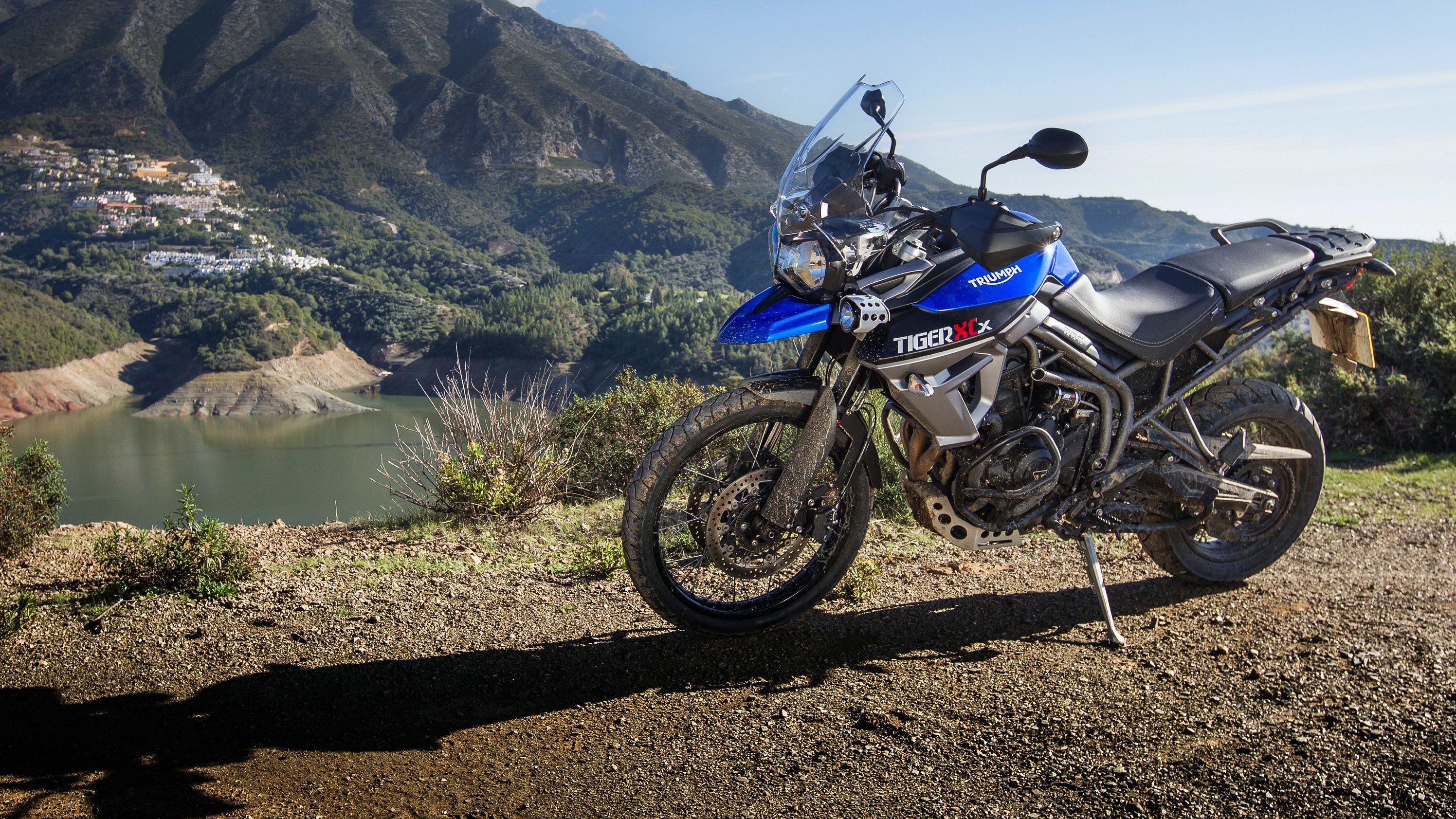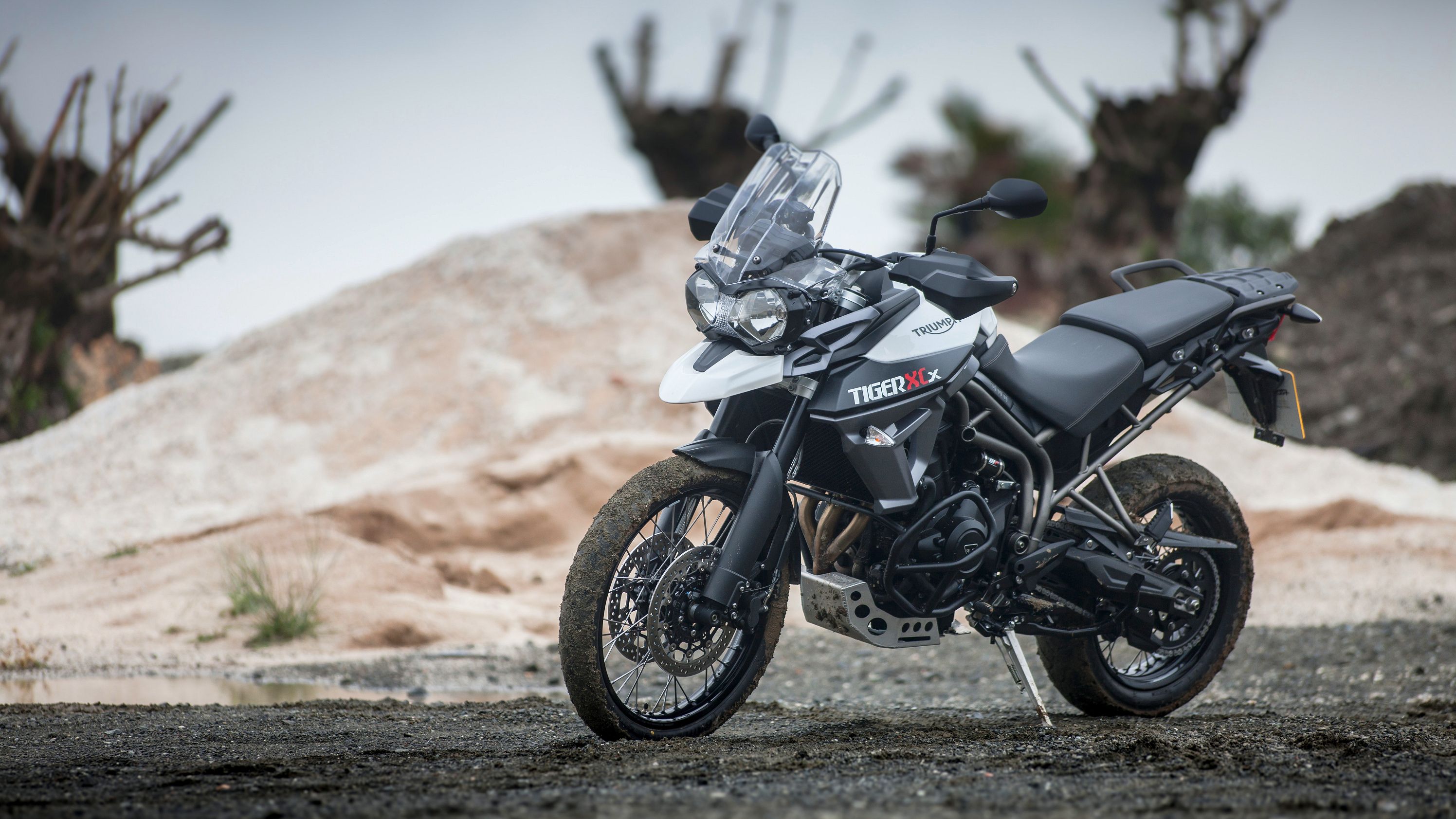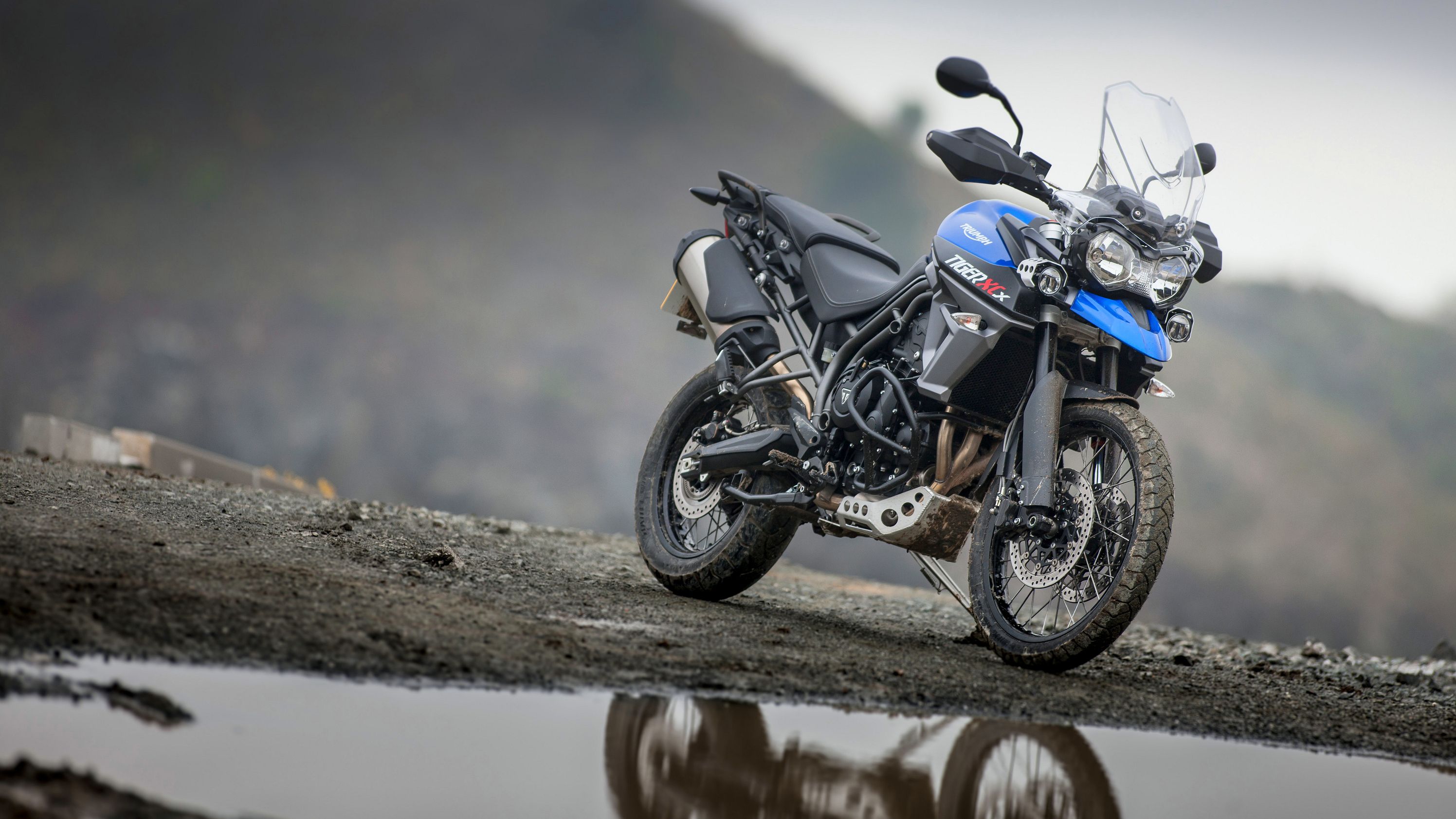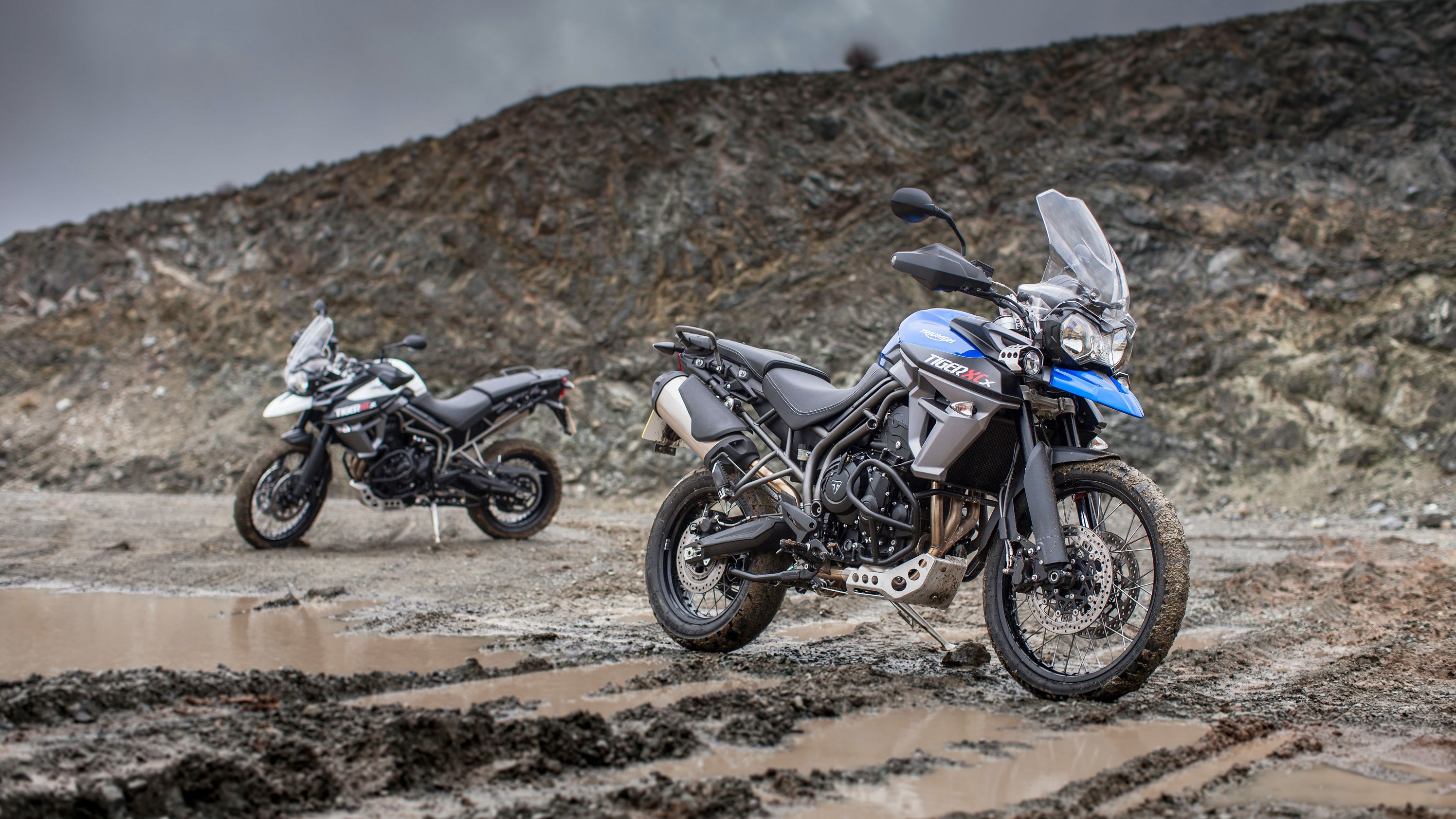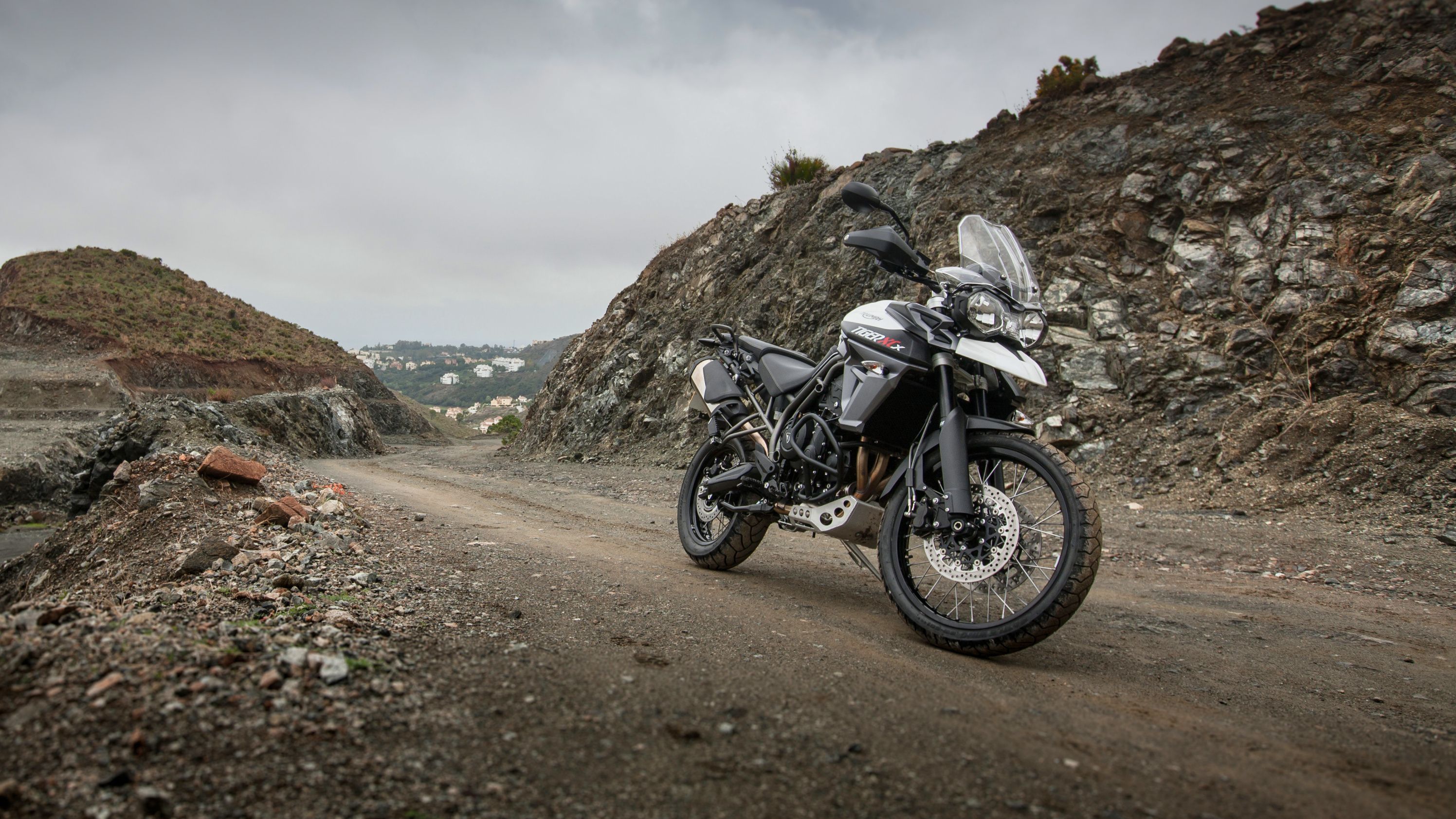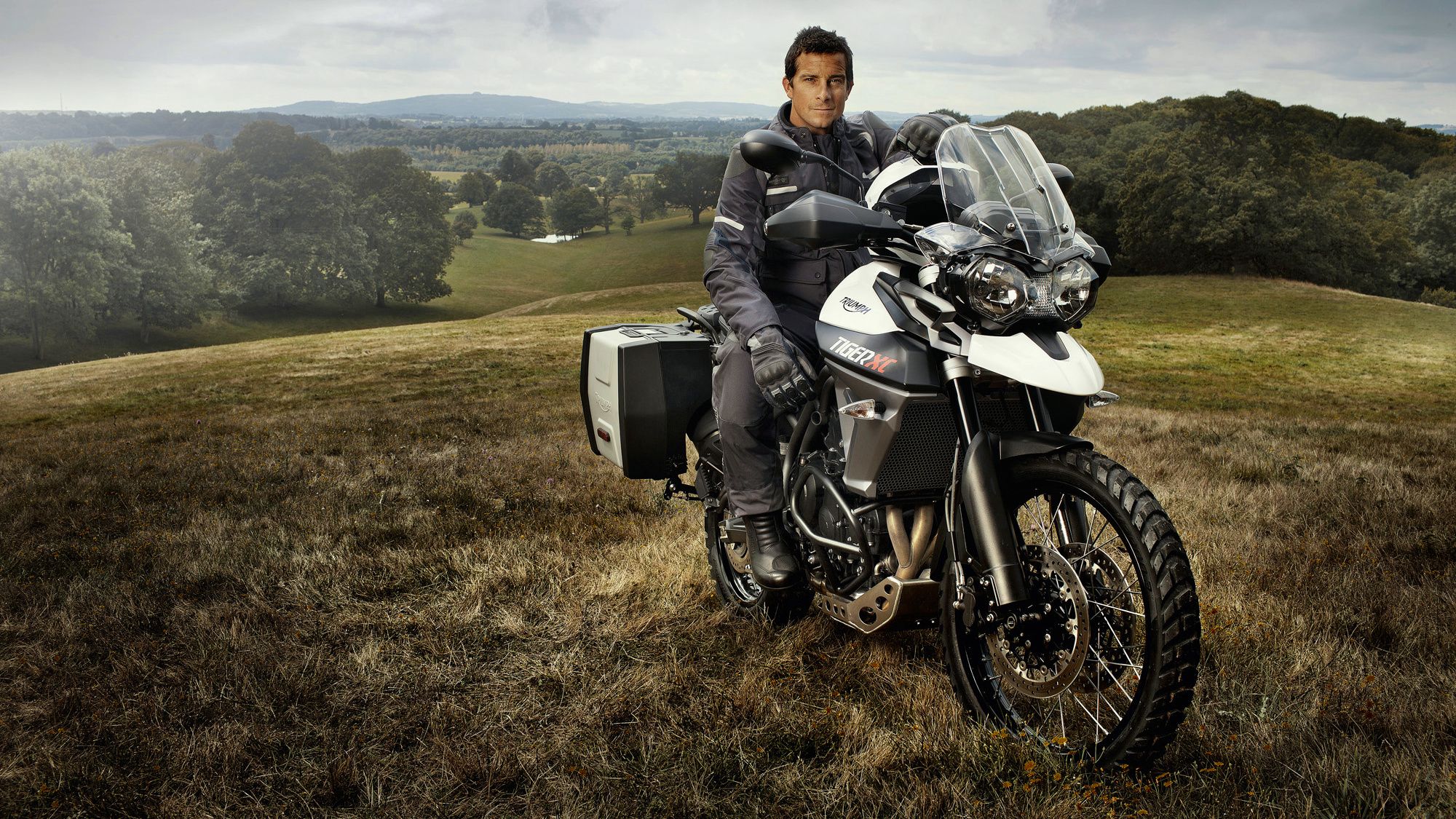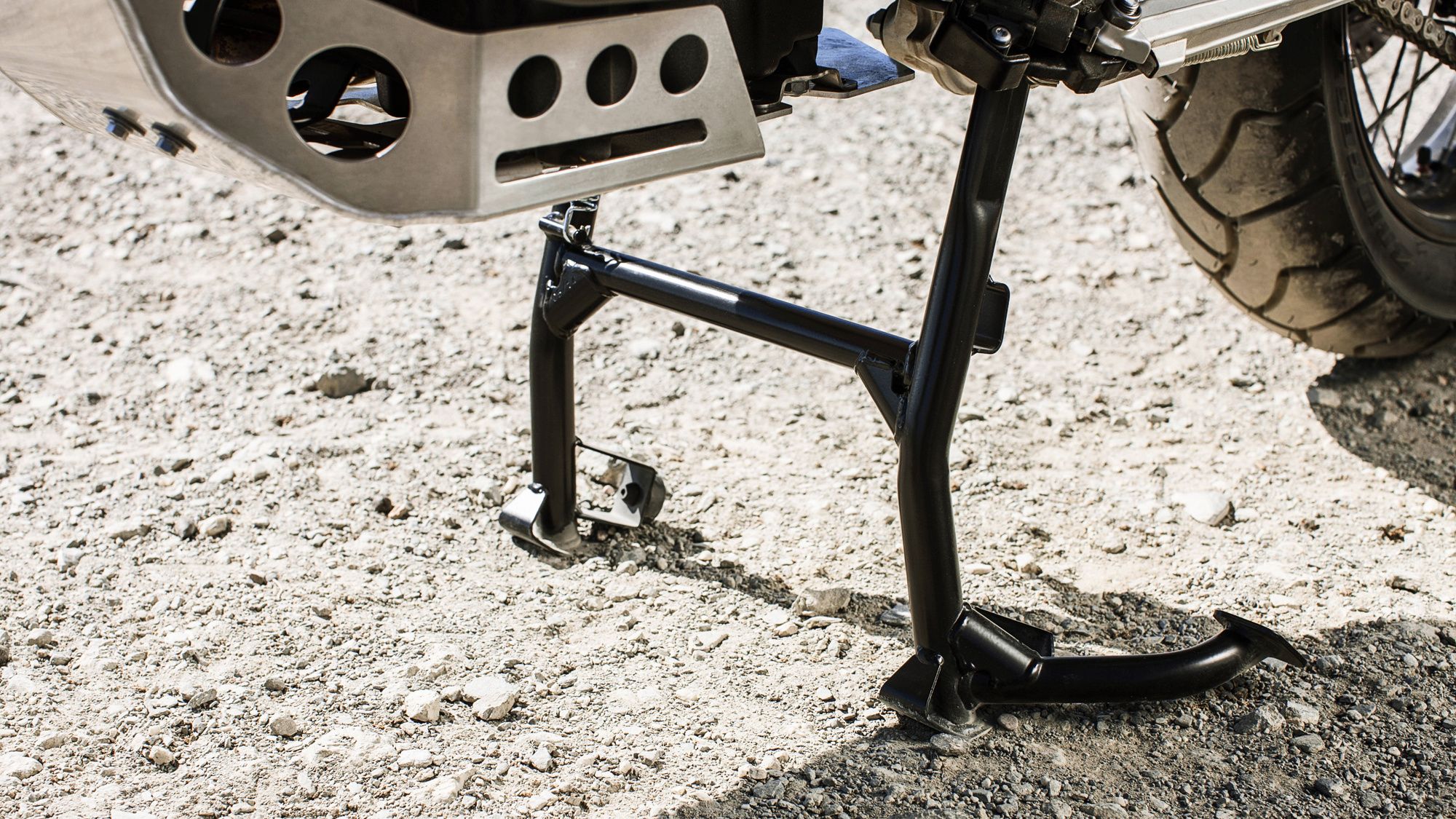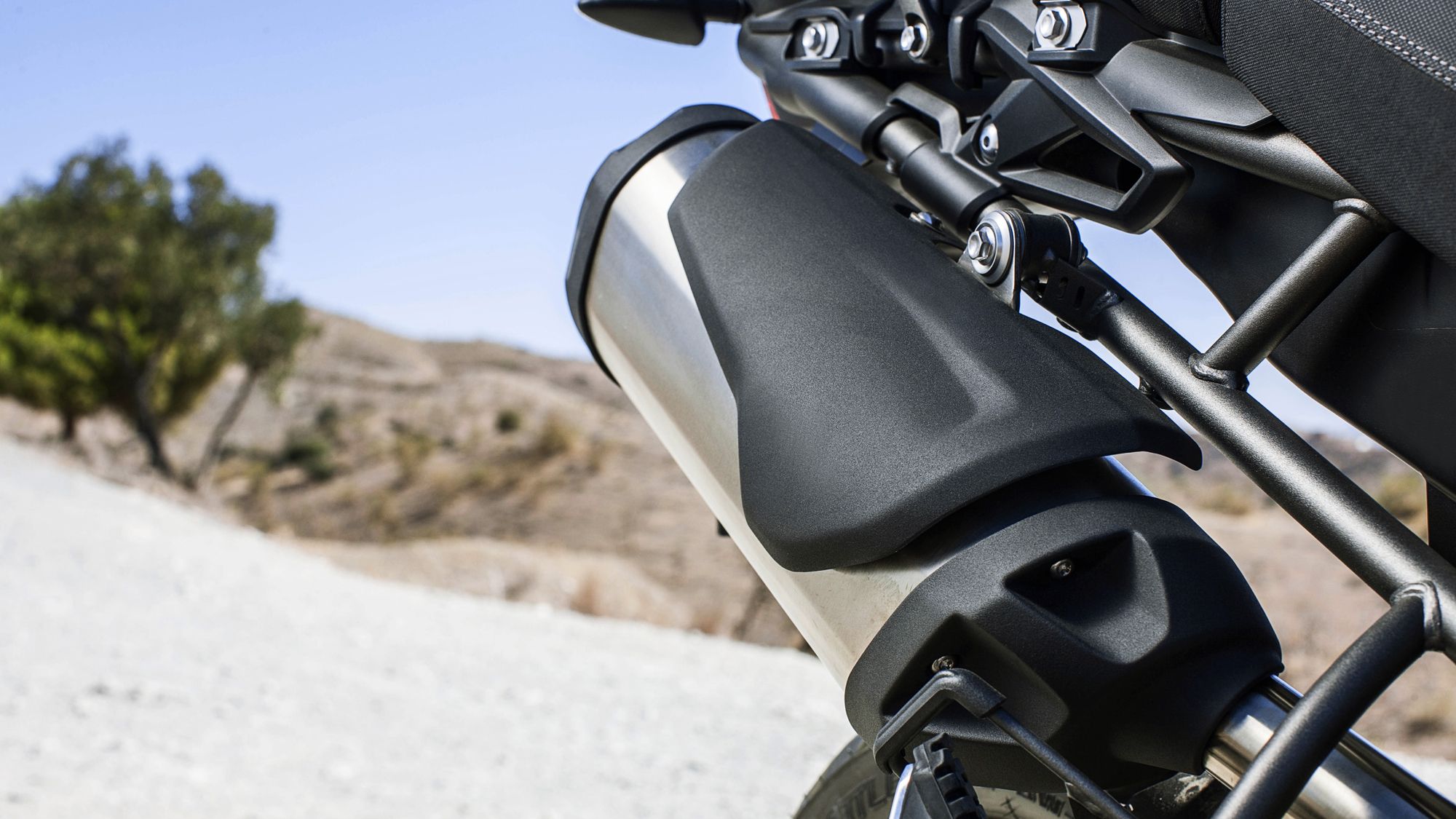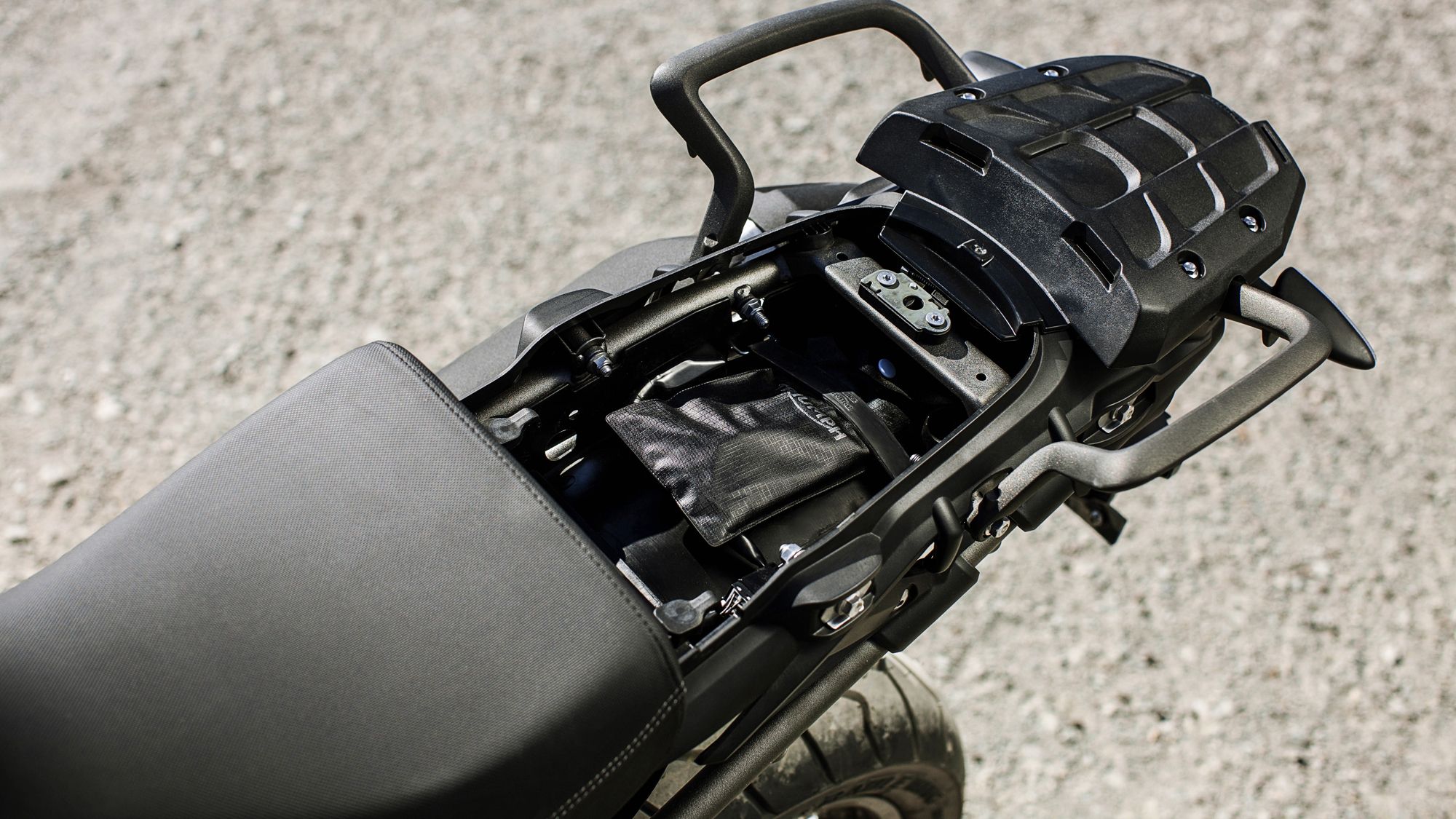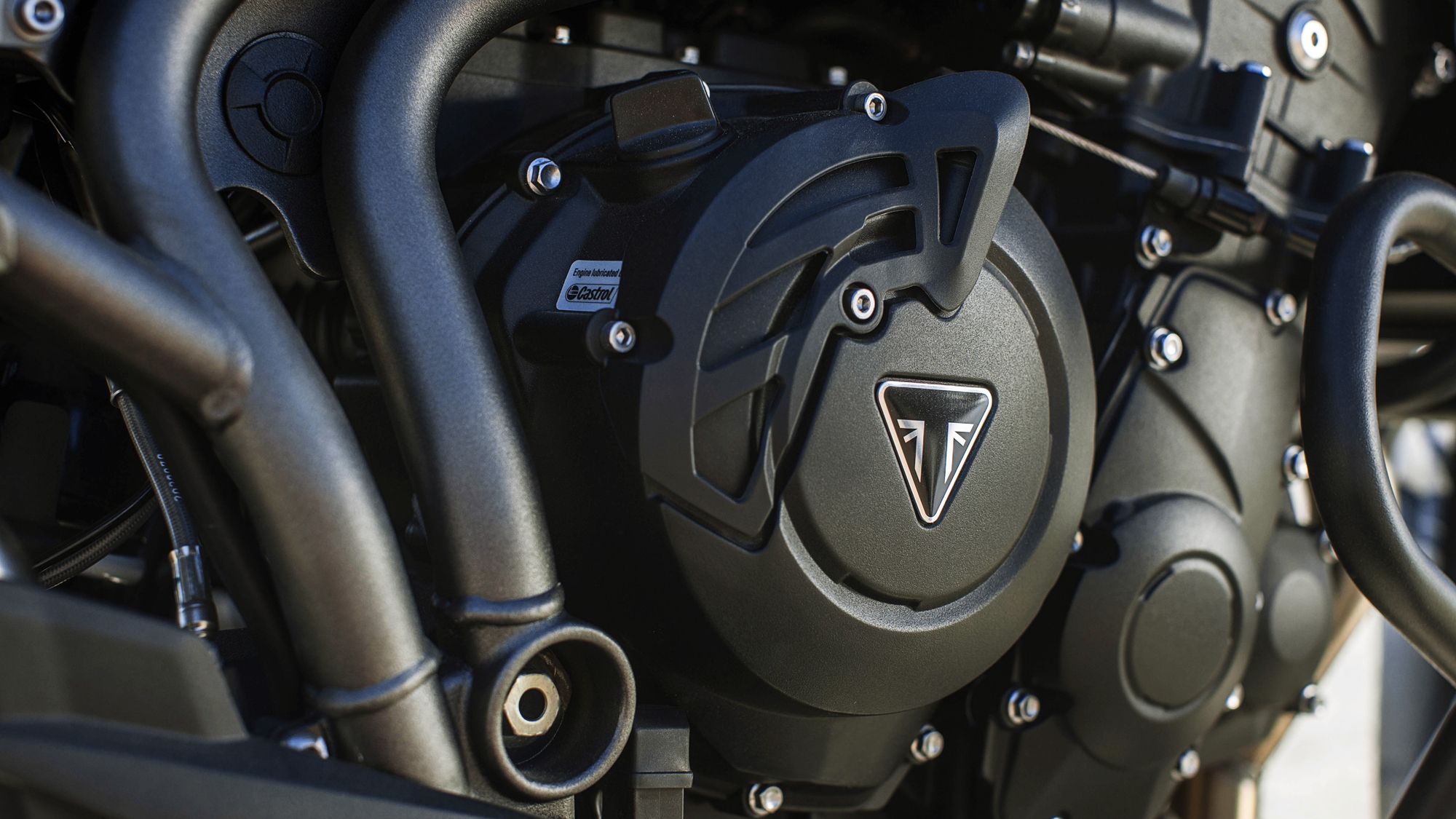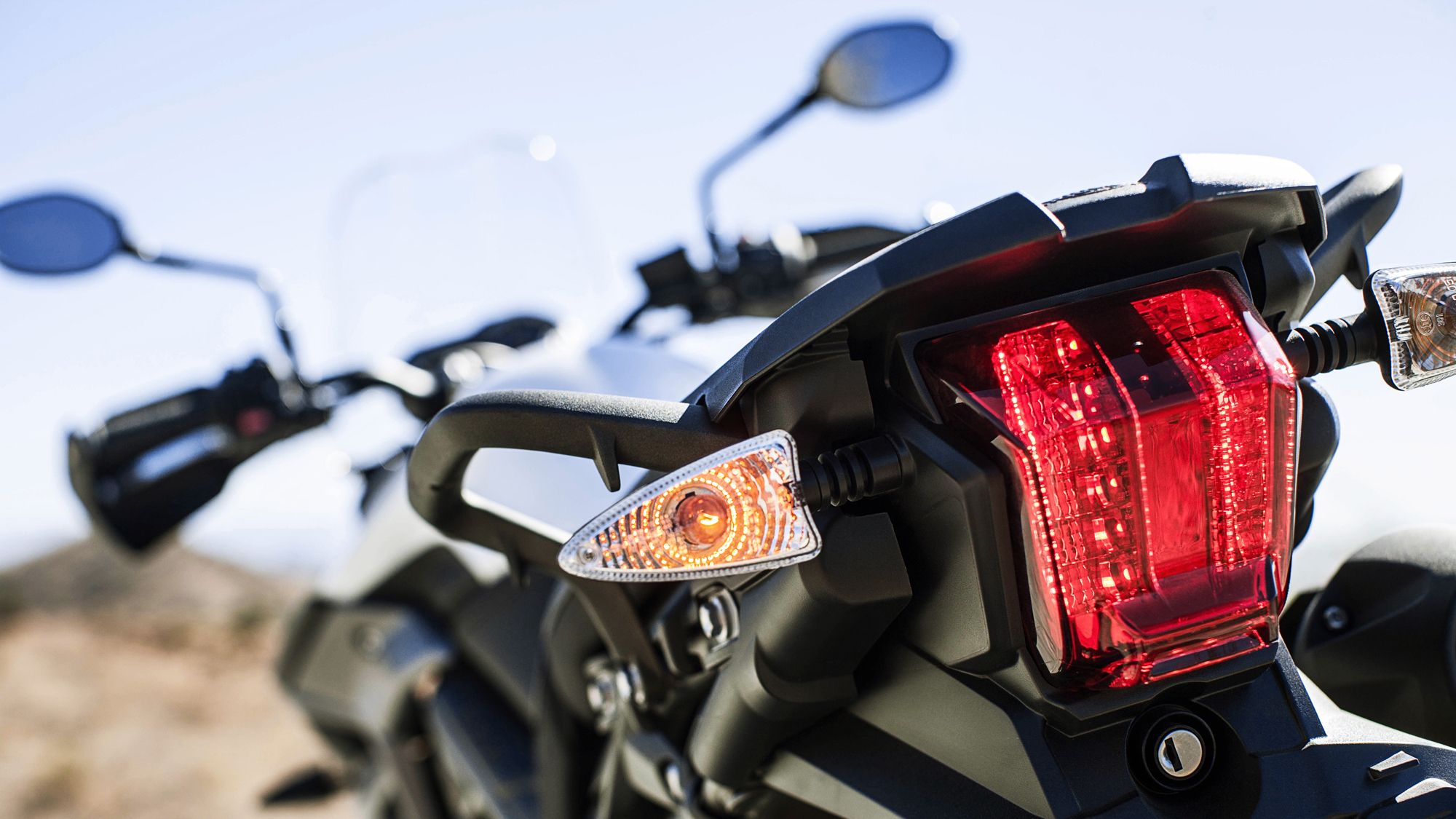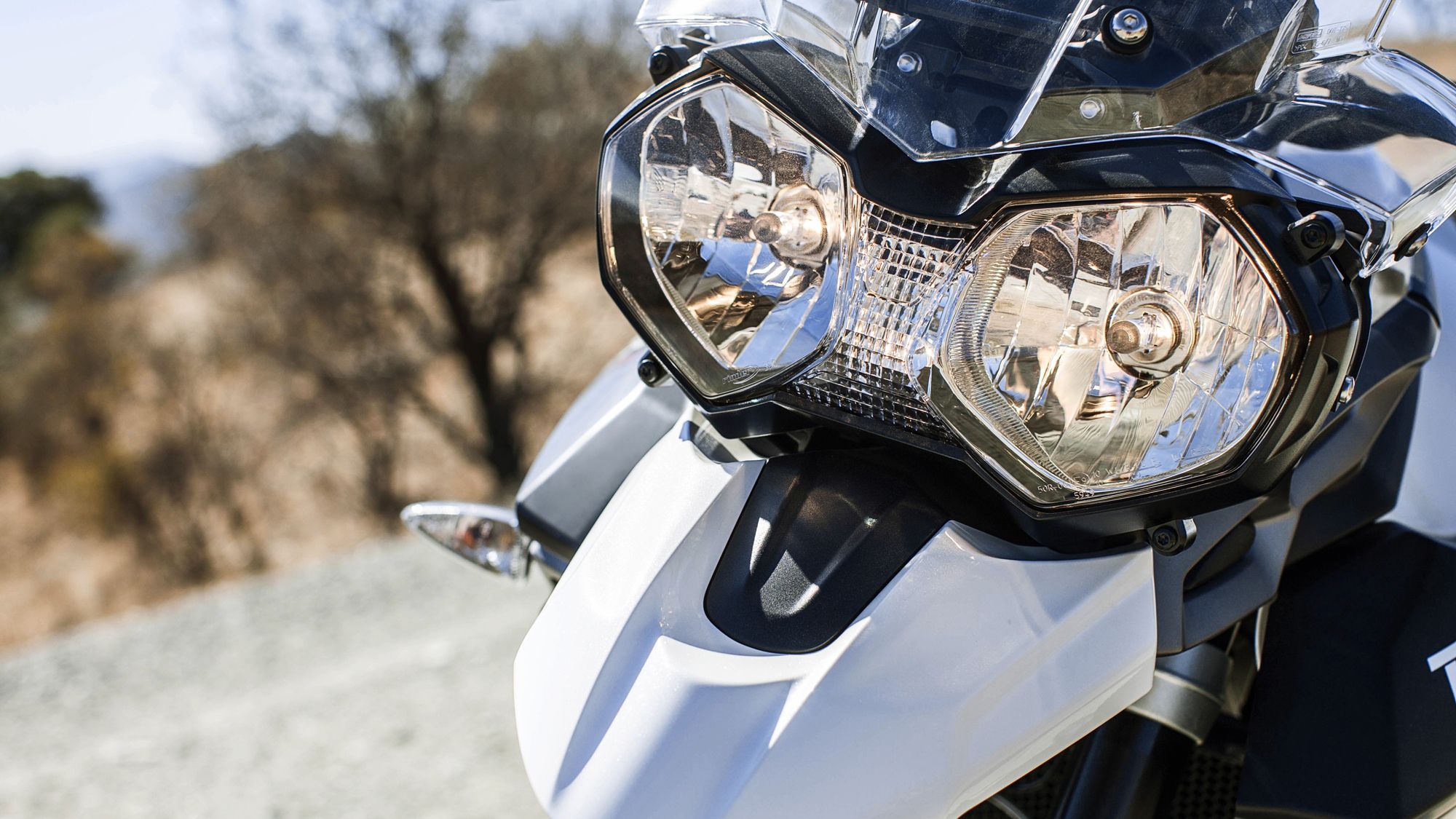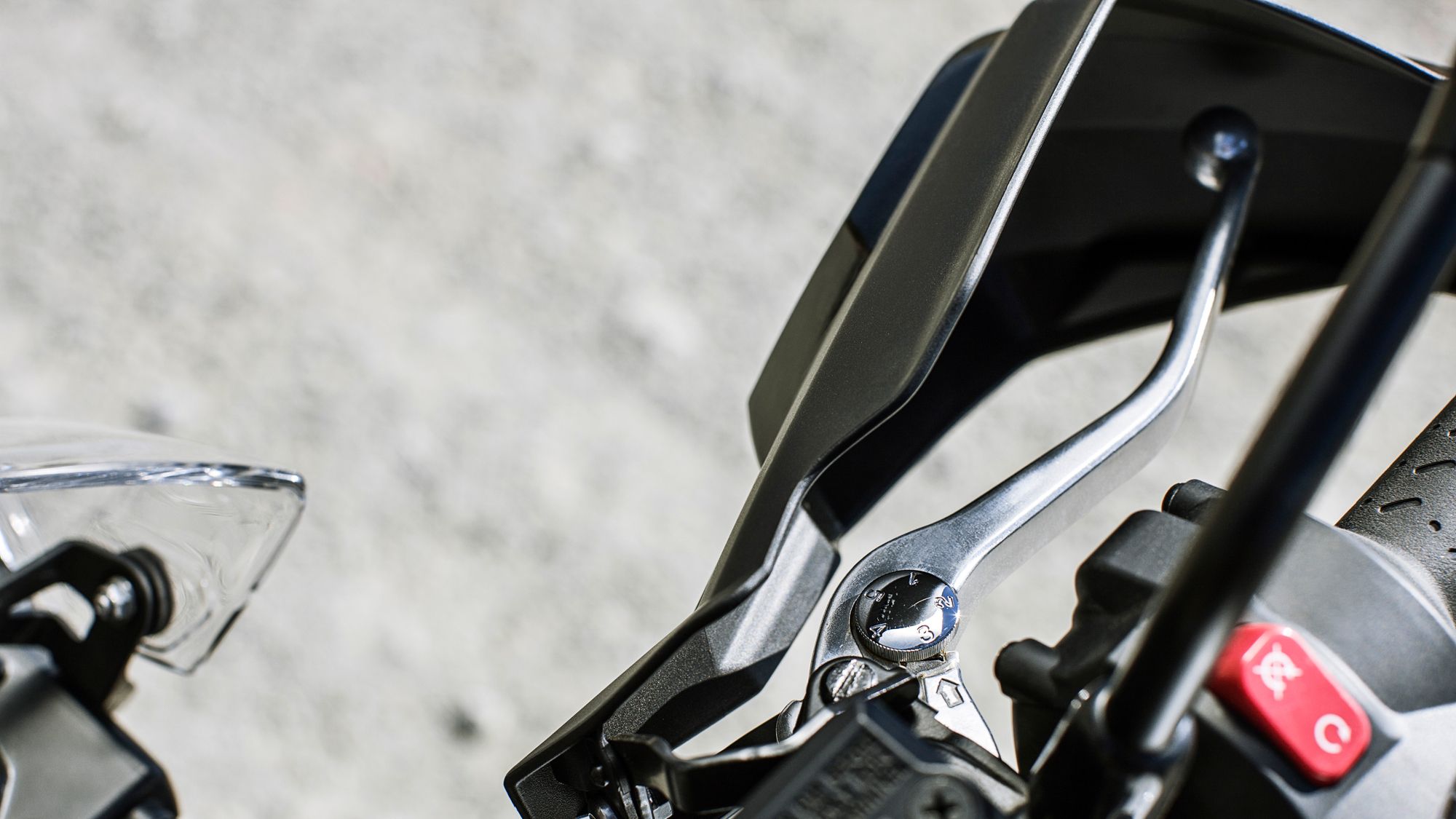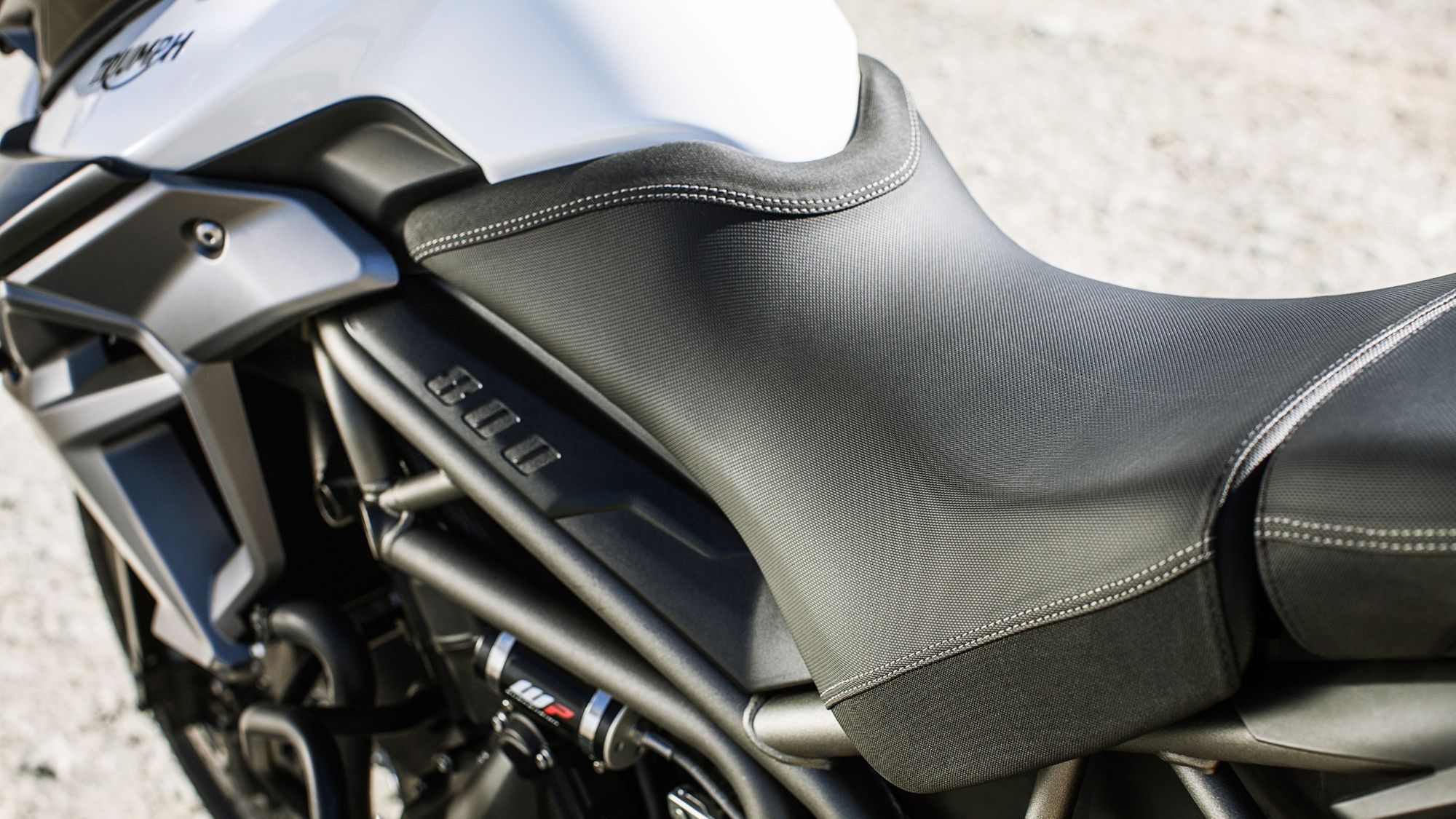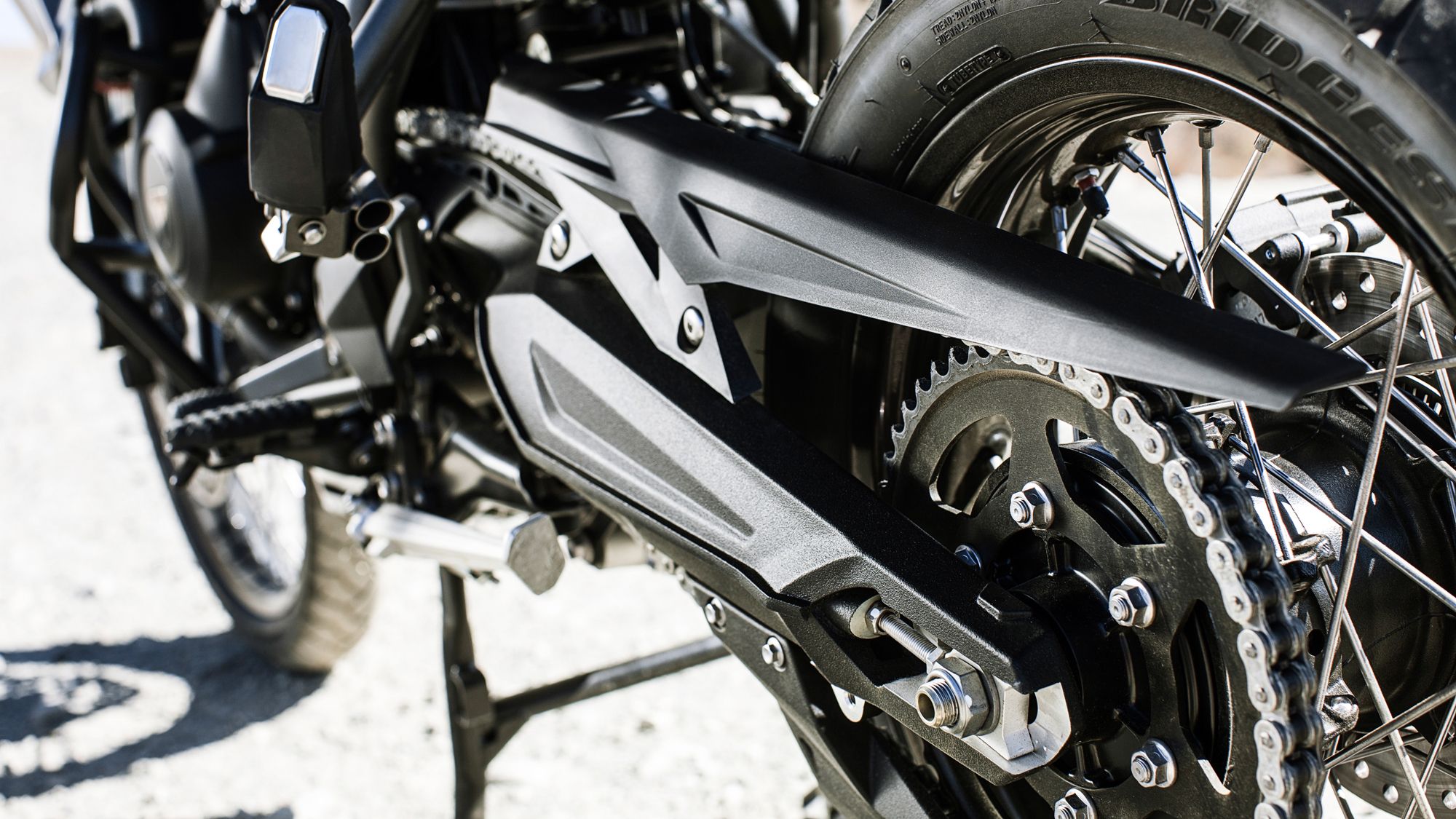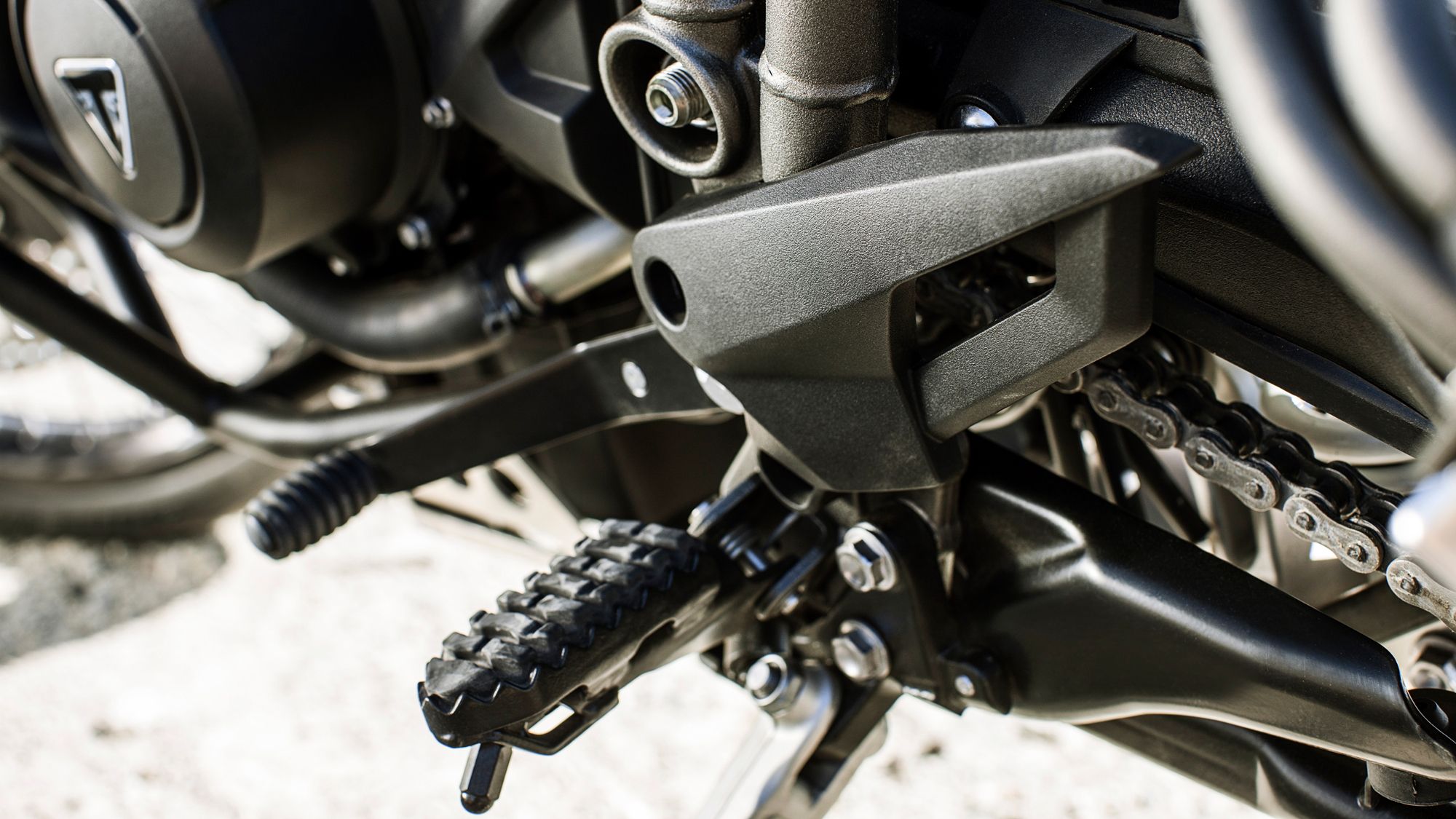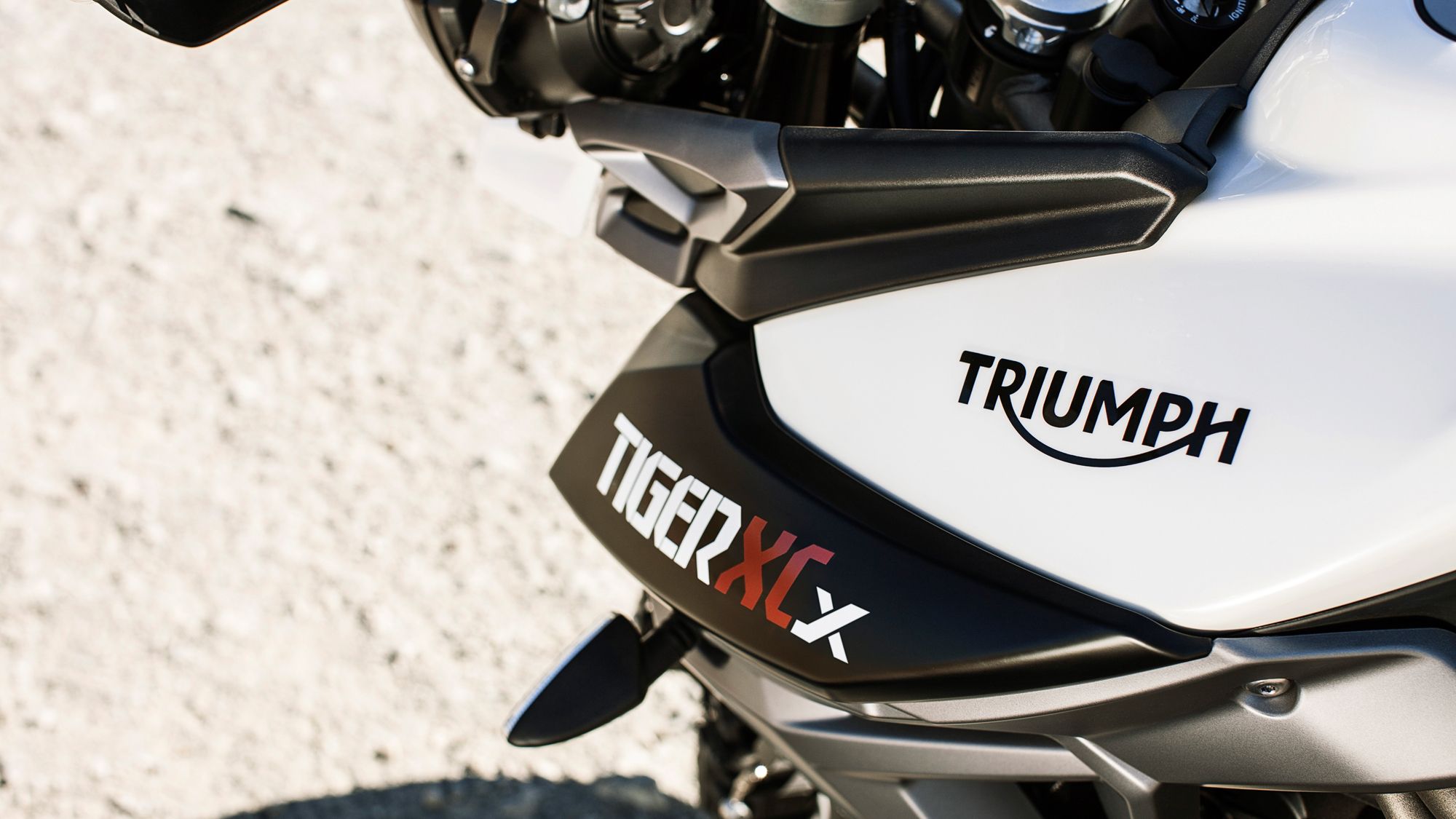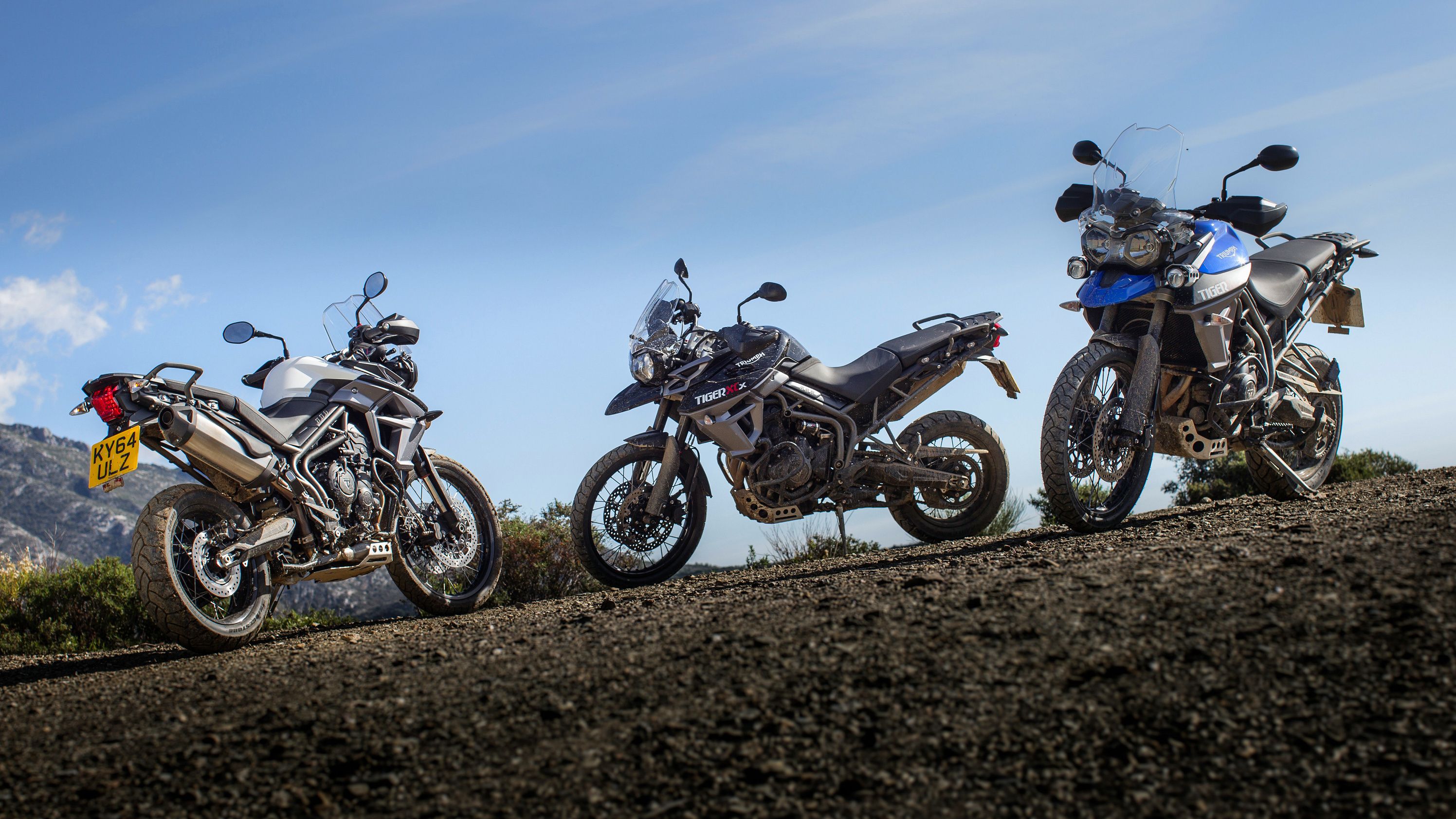Triumph released a brand-new Tiger 800 XC lineup ahead of MY2018 with over 200 improvements across the board, and the British giant carries it straight over into the 2019 season. Not only does the littlest Tiger come with fresh bodywork, but the engine and electronics were upgraded, as well. Additionally, the factory beefed up the XCx's off-road chops with some very specific tuning to give this model even more capability when the blacktop turns to brown.
2018 - 2019 Triumph Tiger 800XCx
- Make: Array
- Model: 2018 - 2019 Triumph Tiger 800XCx
- Engine/Motor: inline-3
- [do not use] Vehicle Model: Array
Triumph Tiger 800 XCx Design
Triumph does offer a larger-displacement Tiger with an equally adventuresome disposition, but you could argue that the mid-range is more likely to be looked at first by folks breaking into the adventure-bike life due to its more-manageable demeanor. It even comes in an A2-compliant version that you can de-restrict once you get your full license.
The factory stepped up its game in the aesthetics category with new side panels and graphics alongside higher quality badges and a new color palette from which to choose. Comfort was on the receiving end of a boost as well; the factory moved the handlebar back 0.39 inch (10 mm) for a more relaxed riding position when seated and to make it easier to operate the bike while standing up on the footpegs.
The Tiger leads off with the typical bird's-beak fairing, but most of the fling control falls to the pared down front fender. Since the forks are of the upside-down variety, the fender comes with some rather lengthy uprights that shield the swept area of the inner fork tubes from grit and road grime to save the fork seals from premature wear and failure.
LED technology abounds with symmetrical dual headlights that dominate the visage from their spot below the five-position adjustable windscreen. The screen comes with additional deflectors down low that work with the handguards to shunt the wind away from your body, and of course, the latter makes the heated handgrips all the more effective.
In profile, the Tiger displays the classic adventure flyline with a tall fuel tank hump that holds an even five gallons ahead of the deep swale at the saddle that's created by the upswept subframe. That has the effect of pulling the rider down into the bike for an enhanced feeling of oneness between man (or woman) and machine, and the seat itself is adjustable between 33.07 inches and 33.85 inches so you can dial it in somewhat for your inseam length. Yeah, that's kind of tall, but it is intended for off-road use and the generous suspension stroke had to be accommodated somehow.
The final bit of off-roadiness comes in the form of a bash plate down low to prevent terrain-to-engine strikes that also protects the 3-into-1 exhaust headers as they make their turn at the cradle to head back to the single upswept muffler. I suppose the silencer itself also counts as an off-road feature as well since its position is meant to keep it out of harm's way.
Triumph Tiger 800 XCx Chassis
Tubular-steel members make up the Trellis frame that does almost as much for the look as it does for the structure. Since most of the frame is visible and painted in a contrasting light color, it adds to the overall aesthetic, and I'd go so far as to say it's the visible bones that gives the Tiger family its industrial-British panache.
A yoke-style, cast-aluminum swingarm completes the frame with good old steel-laced aluminum rims to round out the rolling chassis. As for the rubber, it comes with street-biased, Bridgestone Battlewing hoops that carry deep grooves for soft-surface performance and water evacuation. They're asymmetrical with a 90/90-21 up front opposite a 150/70-17, and that's sure to help it negotiate light to moderate terrain.
The suspension does its part, too. WP provides a set of 43 mm forks that boast an adjustable rebound- and compression-damping feature along with an 8.66-inch stroke to soak up the abuse of off-road work. Out back, the WP monoshock rocks a remote reservoir with hydraulically adjusted preload feature and an 8.46-inch stroke.
Dual, 305 mm discs and twin-piston Brembo anchors slow the front wheel with a single-pot Nissin caliper and 255 mm disc out back. Switchable ABS comes stock, so you can take or leave it as you please. Rake and trail are rather short at 23.4 degrees and 3.68 inches, respectably, and this gives the Tiger its great maneuverability, especially at slower speeds.
|
Frame: |
Tubular steel trellis frame |
|
Swingarm: |
Twinsided, cast aluminum alloy |
|
Front Suspension: |
WP 1.69 in (43 mm) upside down forks, with adjustable rebound and compression damping, 8.66 in (220 mm) travel |
|
Rear Suspension: |
WP monoshock with remote oil reservoir, hydraulically adjustable preload, 8.46 in (215 mm) rear wheel travel |
|
Rake: |
23.4 º |
|
Trail: |
3.68 in (93.5 mm) |
|
Front Wheel: |
Spoked, 21 x 2.15 in |
|
Rear Wheel: |
Spoked, 17 x 4.25 in |
|
Front Tire: |
90/90-21 |
|
Rear Tire: |
150/70 R17 |
|
Front Brakes: |
Dual 305 mm floating discs, Brembo 2piston sliding calipers, switchable ABS |
|
Rear Brakes: |
Single 255 mm disc, Nissin single piston sliding caliper, switchable ABS |
Triumph Tiger 800 XCx Drivetrain
A next-generation, three-cylinder powerplant delivers the goods with a respectable 95 ponies on tap at 9,500 rpm backed up by 58 pound-feet of torque at 8,050 rpm; manageable, but still fun. The 800 cc comes from the 74.05 mm bores and 61.9 mm stroke with an 11.3-to-1 compression ratio that will call for top-hook pump champagne.
It's liquid cooled with a radiator tucked away up under the steering head, and it uses a dual over-head cam to time the valvetrain that runs with four poppets per cylinder. The exhaust system was on the receiving end of a weight reduction on this model with a new high-flow construction for lower resistance and greater power/freer revs.
Safety-related electronics give the Tiger some extra comfort, 'cause let's face it, keepin' it rubber-side down and between the stripes is very comforting. There's a bundle of five riding modes as well as a traction control feature to help you achieve that, and I reckon the only way it could be better is if those items were of the corner-sensitive variety, but this isn't that kind of bike. A six-speed transmission does its bit with an extra-short first gear meant to aid in controlled takeoffs, especially in soft terrain.
|
Engine: |
Liquid-cooled, 12 valve, DOHC, in-line 3-cylinder |
|
Displacement: |
800 cc |
|
Bore x Stroke: |
2.91 in (74.05 mm) x 2.43 in (61.9 mm) |
|
Compression: |
11.3:1 |
|
Max Power EC: |
95 hp (70 kW) @ 9,500 rpm |
|
Max Torque EC: |
58 lb-ft (79 Nm) @ 8,050 rpm |
|
Fuel System: |
Multipoint sequential electronic fuel injection |
|
Exhaust: |
Stainless steel 3-into-1 header system, side mounted stainless steel muffler |
|
Final Drive: |
O-ring chain |
|
Clutch: |
Wet, multi-plate |
|
Gearbox: |
6-speed |
Triumph Tiger 800 XCx Pricing
The 2019 Tiger 800 XCx rolls in Jet Black for a starting price of $14,600. This model rocks new colors for the family to include Matt Khaki Green, Lucerne Blue (my fave) or Crystal White for a bit more at $14,850.
Triumph Tiger 800 XCx Competitors
Honda provides the competitor for today's head-to-head comparison with its globetrotting Africa Twin model. The Red Riders utterly shun the bird's-beak front fairing in favor of a snub-nose entry that just looks much better to my eyes. Spray control falls entirely to a larger front fender that probably adds a few ounces of unsprung weight at the front axle, but I'm OK with that. Anything's better than having a phallic-looking (in profile) fairing on point, pun fully intended.
Beyond that, Honda hits all the important high points and comes off looking a bit more polished due to the fact that much of the frame is hidden, and the rest is rather understated, so it doesn't add to the aesthetic in quite the same way that the Tiger's does. Honda's suspension comes fully adjustable for a slight edge, but at the anchors, the Africa Twin only allows the rear ABS to be disabled, where Triumph allows for complete disengagement at both ends to allow for a full-raw ride.
Honda's beating heart measures in at 998 cc for a definite edge in displacement, but that doesn't necessarily translate into more power since the Africa Twin only claims 93 ponies. However, the twin-cylinder configuration pays off in the grunt department with 73 pounds of grunt against the Tiger's 58 pound-feet, so it has a bit more oomph coming out of the hole. Honda picks up a minor win at the counter with a $13,599 sticker that's a skosh under the Tiger's tag.
He Said
“Looks like a good bike for someone who wants to break into the ADV genre. It's non-threatening due to its moderate power output, safety systems and comfort features, and I'm sure our buddies across the pond will appreciate the A2-compliance as well as the ability to circumvent same when the time comes. As for me, I like the British look, if not the front fairing particularly, but it's the electronics that sells it.”
She Said
My wife and fellow motorcycle writer, Allyn Hinton, says, “The Tiger XC has always been a nice offroad bike; it has the 21-inch front wheel that is better for that purpose and it comes with features such as hand and engines guards and a skid plate that tell you, 'Yes, this is meant for offroad' and not just a street bike that you can doctor up in the accessories catalog. We have a lower first gear now, which is better in slower maneuvers in terrain, and a taller top gear. The changes to the engine aren't dramatic, but each year, Triumph tweaks things just a bit to make improvements.”
Triumph Tiger 800 XCx Specifications
|
Engine & Drivetrain: |
|
|
Engine: |
Liquid-cooled, 12 valve, DOHC, in-line 3-cylinder |
|
Displacement: |
800 cc |
|
Bore x Stroke: |
2.91 in (74.05 mm) x 2.43 in (61.9 mm) |
|
Compression: |
11.3:1 |
|
Max Power EC: |
95 hp (70 kW) @ 9,500 rpm |
|
Max Torque EC: |
58 lb-ft (79 Nm) @ 8,050 rpm |
|
Fuel System: |
Multipoint sequential electronic fuel injection |
|
Exhaust: |
Stainless steel 3-into-1 header system, side mounted stainless steel muffler |
|
Final Drive: |
O-ring chain |
|
Clutch: |
Wet, multi-plate |
|
Gearbox: |
6-speed |
|
Chassis: |
|
|
Frame: |
Tubular steel trellis frame |
|
Swingarm: |
Twinsided, cast aluminum alloy |
|
Front Suspension: |
WP 1.69 in (43 mm) upside down forks, with adjustable rebound and compression damping, 8.66 in (220 mm) travel |
|
Rear Suspension: |
WP monoshock with remote oil reservoir, hydraulically adjustable preload, 8.46 in (215 mm) rear wheel travel |
|
Rake: |
23.4 º |
|
Trail: |
3.68 in (93.5 mm) |
|
Front Wheel: |
Spoked, 21 x 2.15 in |
|
Rear Wheel: |
Spoked, 17 x 4.25 in |
|
Front Tire: |
90/90-21 |
|
Rear Tire: |
150/70 R17 |
|
Front Brakes: |
Dual 305 mm floating discs, Brembo 2piston sliding calipers, switchable ABS |
|
Rear Brakes: |
Single 255 mm disc, Nissin single piston sliding caliper, switchable ABS |
|
Dimensions & Capacities: |
|
|
Width Handlebars: |
31.69 in (805 mm) |
|
Height Without Mirror: |
54.72 in (1,390 mm) |
|
Seat Height: |
33.07 - 33.85 in (840 - 860 mm) |
|
Wheelbase: |
60.83 in (1,545 mm) |
|
Dry Weight: |
452 lbs (205 kg) |
|
Tank Capacity: |
5 Gal. |
|
Details: |
|
|
Instrument Display and Functions: |
TFT multifunctional instrument pack with digital speedometer, trip computer, digital tachometer, gear position indicator, fuel gage, service indicator, ambient temperature, clock and five rider modes (Road/Offroad/Off-Road Pro/Sport/Track) |
|
Colors: |
Jet Black, Matt Khaki Green, Lucerne Blue, Crystal White |
|
Price: |
Jet Black: $14,600, Colors:$14,850 |
Further Reading
Honda Africa Twin
See our review of the Honda Africa Twin.
Triumph Tiger 1200 XCx
See our review of the Triumph Tiger 1200 Xcx.
Triumph Motorcycles
Read more Triumph news.

